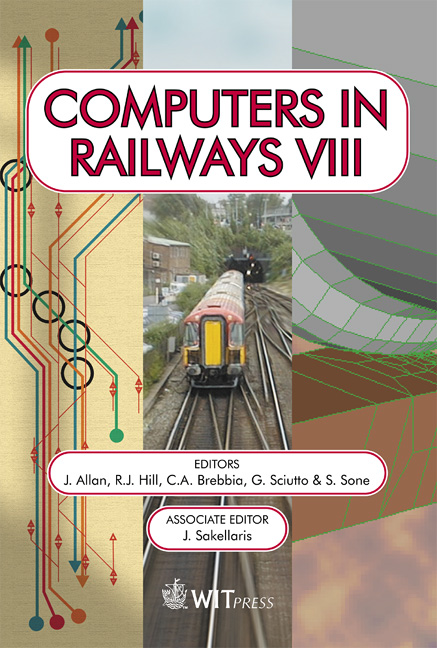Comparing The Performance Of ERTMS Level 2 Fixed Block And ERTMS Level 3 Moving Block Signalling Systems Using Simulation Techniques
Price
Free (open access)
Transaction
Volume
61
Pages
10
Published
2002
Size
595 kb
Paper DOI
10.2495/CR020051
Copyright
WIT Press
Author(s)
J A Koning
Abstract
The BB21 programme at Railinfrabeheer has been set up to realise the demands for intensified utilization of the Dutch railway network. The Bev21 is having a new signalling system developed according to the ERTMS specifications for level 2 with fixed blocks and for level 3 with moving blocks. Since the timely delivery of the ERTMS level 3 moving block system has become uncertain, RIB has conducted a research study to assess the differences in performance between the two systems. The main questions for the current research were: - What are the headways in a given number of normative situations? - What is the difference in performance between ERTMS level 2 fixed block and ERTMS level 3 moving block on a given set of routes that are representative for the Dutch railway network? To compute the headways, spreadsheet models have been developed. To assess the performance of the ERTMS level 2 and level 3 systems, three journey routes have been selected. For each journey route a timetable was given for the expected intensified use in 20 10, with two levels of perturbation, to determine the ability of the systems to recover from perturbations. With these data, computer simulations models have been developed and run. The study revealed that headways in ERTMS level 3 are smaller than in ERTMS level 2 on the free track, even when short (200 m) blocks are used in ERTMS level 2. In station areas, headways in ERTMS level 2 are smaller than in ERTMS level 3. The results from the simulations showed that ERTMS level 3 moving block yields better overall performance than ERTMS level 2, although the differences are small in some cases. ERTMS level 2 performs better than ERTMS level 3 with fixed block, again with only small differences. We found significant differences in performance of both systems with respect to the production model and route characteristics.
Keywords





